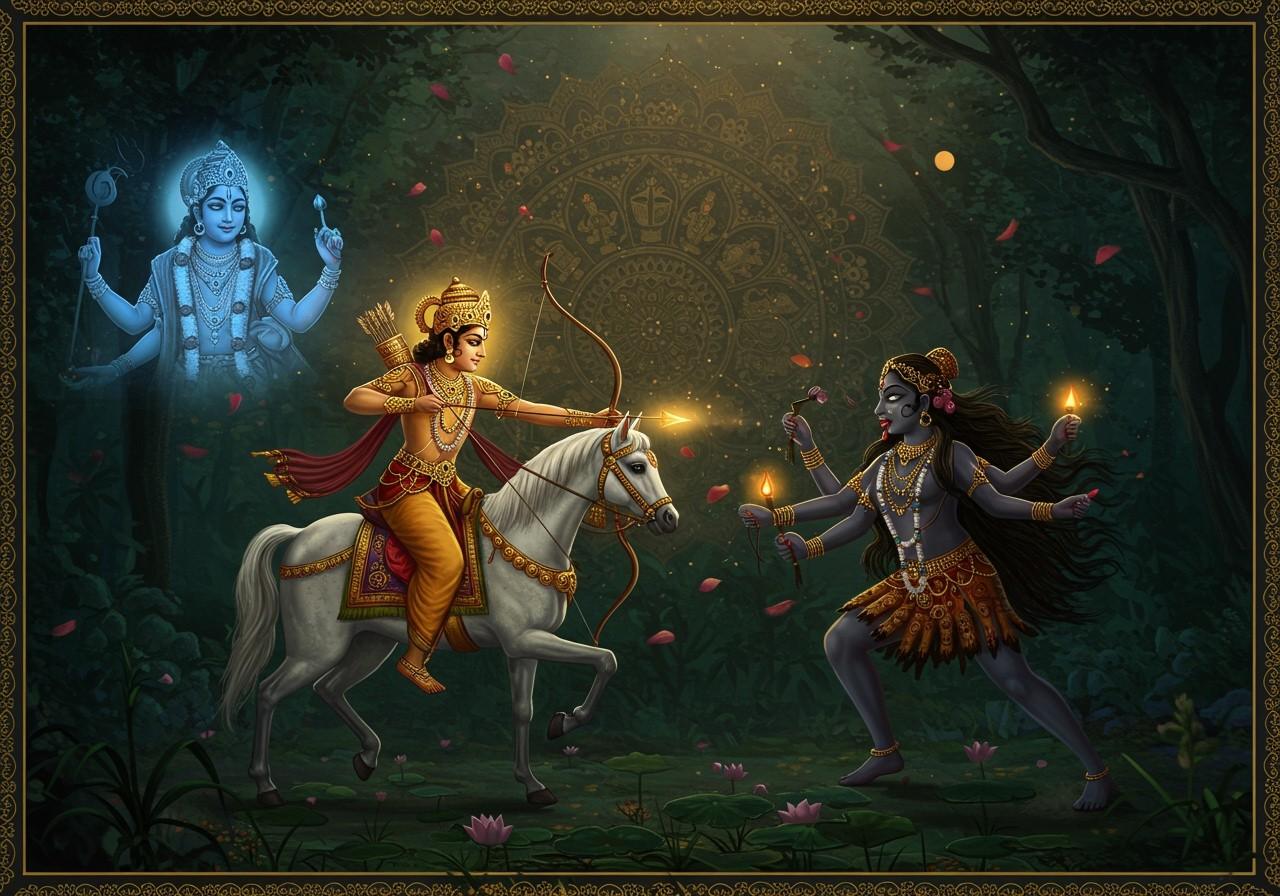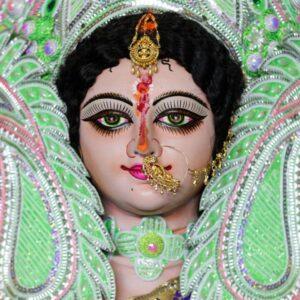
King Parikshit, a descendant of the Pandavas, holds a significant place in Hindu traditions. His narrative, primarily found in the Mahabharata and the Bhagavata Purana, offers profound moral lessons and cultural insights. This tale resonates deeply with those rooted in cultural heritage, traditional values, and a preference for authentic ritual items.
The Historical Context of Parikshit’s Reign
The Mahabharata, a cornerstone of Hindu literature, narrates the saga of the Kuru dynasty and the epic Kurukshetra war. Parikshit, grandson of Arjuna and son of Abhimanyu, inherited the throne as the last king of this lineage. His reign, marked by the socio-political aftermath of the Kurukshetra war, is a crucial period in Hindu history. The Bhagavata Purana meticulously preserves Parikshit’s story, transmitting it across generations with diverse interpretations.
The Curse and Tragic Death of Parikshit
Parikshit’s tale takes a tragic turn with an act of disrespect towards the sage Shamika. By placing a dead snake around the sage’s neck, Parikshit unknowingly invited a devastating curse. Shamika’s son, Shringi, condemned Parikshit to die from a snake bite within seven days. This curse underscores the Hindu principles of karma and dharma, where actions bear consequences. In the face of impending doom, Parikshit spent his final days in remorse and devoted himself to listening to the recitation of the Bhagavata Purana. His death, inflicted by the vengeful snake Takshaka, is interpreted variously across Hindu traditions.
According to updated accounts, King Parikshit, a descendant of the Pandavas, was cursed by Rishi Shamika’s son, Shringi (not Shamika himself), to die from a snakebite. Takshaka, a vengeful snake, fulfilled this curse. Parikshit accepted his fate with remorse and appointed his son Janamejaya as the new king. Janamejaya, fueled by vengeance, vowed to kill Takshaka. This narrative delves into themes of duty, fate, anger, and consequences.
Moral and Philosophical Interpretations of Parikshit’s Story
Parikshit’s story is a treasure trove of moral lessons. His disrespect towards Shamika emphasizes the importance of reverence for sages. The curse and its fulfillment highlight the inescapable consequences of actions, a core tenet of the concept of karma. Parikshit’s repentance and his immersion in the Bhagavata Purana underscore the significance of seeking spiritual knowledge, especially during times of adversity. Hindu scholars offer diverse interpretations of these themes, making Parikshit’s story relevant even in contemporary life. It serves as a powerful cautionary tale about dharma (righteousness).
Cultural and Ritual Significance of Parikshit’s Tale
Parikshit’s narrative is deeply woven into the fabric of Hindu culture and rituals. His story is recounted during festivals and religious ceremonies, serving as a reminder of dharma and the consequences of actions. The tradition of reading the Bhagavata Purana, particularly during challenging times, draws inspiration from Parikshit’s final days. Across India, different regions have incorporated his story into their local customs and traditions, demonstrating its enduring influence. The preservation of Parikshit’s story through oral and written traditions underscores its cultural significance.
Parikshit’s Story in Modern Interpretations
Parikshit’s story continues to inspire modern literature, media, and popular culture. Television serials, movies, and plays have adapted his tale for contemporary audiences. Modern authors and scholars offer fresh perspectives on his narrative, exploring its relevance in ethical discussions and spiritual teachings. Parikshit’s story remains a valuable tool for imparting moral values and fostering discussions on the consequences of actions.
How Poojn.in Supports Your Spiritual Journey
Poojn.in offers a wide selection of authentic items to enrich your spiritual practices and connect with the essence of Parikshit’s story. Explore our collection:
- Brass Laddu Gopal Murti: Ideal for home worship and deepening your connection with Krishna, who narrated the Bhagavata Purana to Parikshit.
- Lord Shiva Marble Dust Murti: Honor Lord Shiva, a central deity in Hindu traditions connected to the Mahabharata narrative.
- Mangalam Camphor: Enhance the purity of your puja rituals, just as Parikshit sought purity in his final days.
- Arjun Chal: Connect with the legacy of Arjuna, Parikshit’s grandfather, through this sacred bark used in traditional remedies.
Poojn.in provides high-quality, authentic puja items delivered across India, helping you maintain the sanctity of your traditions. Each product comes with care instructions and basic puja guidelines, making it easier to incorporate these practices into your life.

